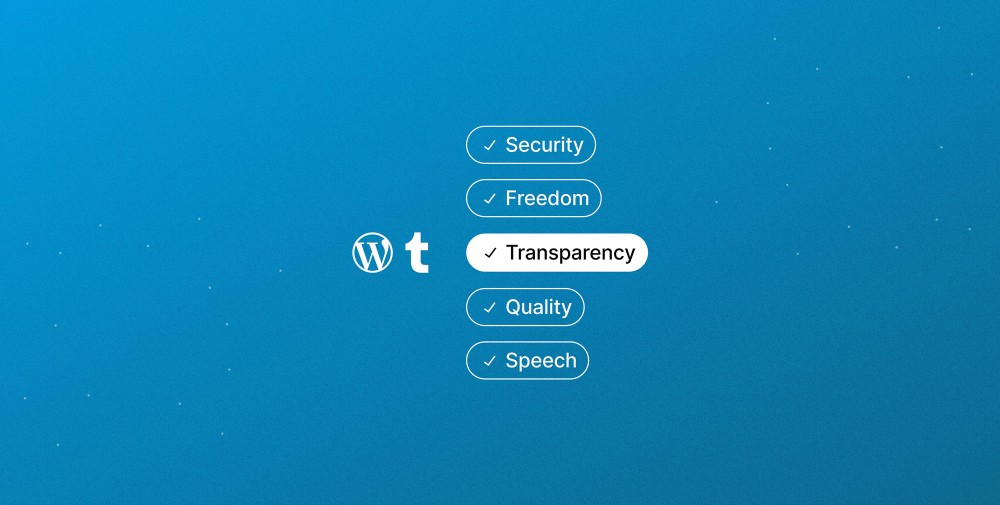
Our latest Transparency Report is out, covering July 1, 2023 – December 31, 2023. As in past reports, you’ll find information about the types and volumes of government requests that we received across Automattic’s services.
Since 2013, we have published bi-annual Transparency Reports providing the public with robust insights into the types of complaints, takedown demands, and information requests that Automattic receives across our products and services. Transparency is an essential pillar in our fight for a democratic internet, and we believe that this type of information belongs to the public.
Each period, our team works to find new ways to define transparency through the data points we include and highlight in our report. We do this based on a handful of factors, including your feedback, different industry trends, or government regulations.
Government Information Requests
This period, we noticed a decrease in government information requests for all of our services. On WordPress.com, we received 2 court orders—compared to last period’s 14—and 25 subpoenas, almost half the amount as last period. Our compliance with these requests also dropped considerably, from 90% to 72%.
Last reporting period, Tumblr experienced an uncanny increase in legal requests for user information, doubling those of the July 1, 2022 – December 31, 2022 period. We learned that this wasn’t a trend, and from July 1, 2023 – December 31, 2023 our numbers reverted to a more expected amount of 97 information requests. Our team complied with 83% of these, a statistic which remained consistent from the previous period.
Intellectual Property
There was a significant increase in trademark infringement complaints in this reporting period compared to the last. The team evaluated over 1,400 reports across our platforms, up from 872 cases during the previous period. Most of these complaints were sent to us by third-party companies hired by trademark holders to monitor their registered marks and go after potential infringement. Despite this considerable increase, only 5% of reports resulted in the removal of content due to receipt of a valid complaint. This staggeringly low metric showcases the poor quality and high volume of frivolous infringement complaints submitted by monitoring companies, only detected through our consequential practice of manually reviewing every takedown notice.
Similarly, we also experienced an influx of abusive copyright infringement complaints by third-party reporters. Just one complainant, OpSec Online LLC, made up 10% of all WordPress.com’s 2,984 DMCA (Digital Millennium Copyright Act) takedown notices received during this period. OpSec Online, a copyright monitoring service similar to one we recently featured in our Hall of Shame, filed almost 300 complaints—with only half of them targeting content that was actually hosted on WordPress.com.
A growing number of third-party monitoring services inundate hosting providers with incomplete notices aimed at non-violative content, or content not even hosted on that platform. We’ve written about the harm caused by automated monitoring services in the past. It’s disappointing to see, as our reported metrics routinely demonstrate, that these abuses of the DMCA and Trademark Law have only escalated in recent years, proving to be increasingly challenging to evaluate.
As always, our transparency reporting is for you. If you have any comments or suggestions on making it more informative, please contact us and let us know.